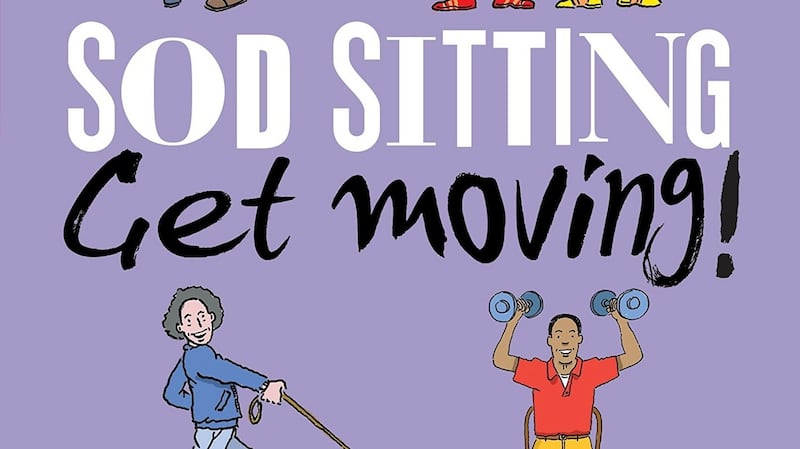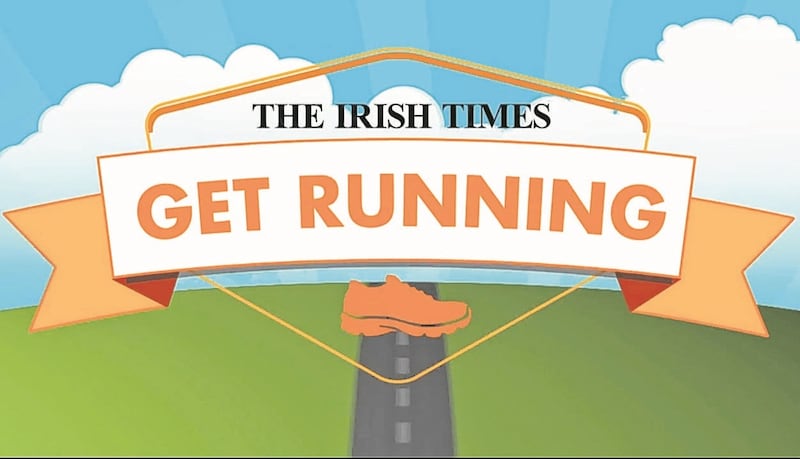The desire to be fit and healthy may not change as we get older but the advice we get does. Diet and exercise programmes often come with warning to check with your doctor if you are over a certain age.
But just what are the concerns? And are we being too cautious? That depends.
Professional athletes, such as sprinters, tend to peak in their 20s and retire in their 30s. So should we take a leaf from their book and give ourselves a break?
Claire McGlynn, a personal trainer and competitive weightlifter at cmgfit.com in Dublin, says dodgy knees, an aching back or overall stiffness are not to be seen as messages from the future that it is time to slow down.
They convince themselves they are 'old' or 'past it' and therefore, should not exercise
“People underestimate the power of the human body. Some tend to put themselves in boxes from the age of 30 and older. They convince themselves they are ‘old’ or ‘past it’ and therefore, should not exercise,” she says.
“They have heard or presume it is too ‘dangerous and harmful’ as they may relate exercise and strength training to fit, young men and women throwing heavy weights around. However, they are forgetting that one of the causes of early ageing, cancer, disease, bone and joint issues, illness, lack of energy, mobility and flexibility is because they are not doing any exercise and their muscles are degrading as the weeks, months and years pass by. “
Even from our 30s we start to lose muscle if we don’t use it regularly. After 50, muscle strength “declines significantly” at a rate of about 15 per cent per decade, according to the American College of Sports Medicine. “Our muscles help keep our skeleton strong, they protect our spine, they protect our organs, they are our organs – the heart being of greatest importance – and weaker muscles go hand in hand with a weak, unhealthy and vulnerable body,” says McGlynn.
They also help to give us our shape, shapeliness and tone. Modern Family actor Sofia Vergara continues to work out even though she has "bad knees, very thin bones and can barely do a push-up" as she explains in the September issue of Women's Health magazine. The 45-year-old, who says she "can't do squats, jumps or running", credits her twice weekly sessions on a Pilates Magaformer machine with helping her stay trim. Essentially the new machine is similar to a Pilates Reformer machine with added weight, so she can work out without suffering the high impact of burpees or box jumps.
Running is very tough on the joints, but even weekend golfers, who then sit at a desk all week, can suffer
High-impact exercise done incorrectly over years causes many people issues later on, according to Sarah MacLachlann, a Pilates instructor, trainer and founder of Pilates Performance Ireland. "People who jogged or did spinning in the 20s can suffer wear and tear of their joints over time. Running is very tough on the joints, but even weekend golfers, who then sit at a desk all week, can suffer."
Others have neglected to exercise at all for years as career and family concerns eat up their time. “Most people have been sedentary and done nothing for years,” says McGlynn, who runs fitness classes for retirees four times a week. “That’s the biggest issue.”
When these clients return to exercise, their concerns tend to be rounded backs, stiff shoulders, knees and hips. “The underlying reason for most of these problems is bad posture, immobility, lack of fitness, and strength and muscle degeneration,” says McGlynn.
That’s no reason to give up however, but it does serve to highlight the value of getting a trained and qualified instructor when returning to exercise at any age.
“If you were going to a doctor or physiotherapist, you would only attend someone who is fully qualified,” says MacLachlann.
McGlynn agrees. “When starting out in later years, it’s best to go to a professional and learn how to train, exercise and move properly, taking all things into consideration,” she says. “Suddenly picking up a sport or exercise out of nowhere with zero experienced guidance is asking for trouble. Form and correct technique is essential to avoid injury.”

A professional will also be able to take into account any advice from your doctor, where appropriate, and guide you as to how far you can push yourself without doing any harm. MacLachlann cites the example of one client who has had a heart condition for 16 years. “He was released from hospital on a Thursday after having an infection in the lining surrounding his heart – pericarditis – and the following Tuesday he was in with me for his first private Pilates session. I still work with him every week two years on,” she says.
“It shocks me to look at people walking around, limping or moving stiffly,” says MacLachlann. “This is not a normal condition of getting older and we should stop thinking that it is. Move, move, move . . . at your pace.”
Take inspiration perhaps from 78-year-old Diana Moran, who is co-author with Muir Gray of Sod Sitting. Get Moving! Getting Active in your 60s, 70s and Beyond. Once known as the Green Goddess, she used to teach fitness classes on daytime television in a tight green Lycra outfit in the 1980s. Far from relaxing into old age, she wants to encourage everyone to take control of their health.
Don't expect to sail back into prime health without feeling any discomfort
“The ageing process cannot, as yet, be slowed down. But by focusing on three other aspects of growing older – loss of fitness, disease and attitude – you can stay young and even feel younger,” she writes. With that in mind, her book includes a series of exercises to tackle specific issues such as mobility problems.
The days of “no pain, no gain” are gone, but don’t expect to sail back into prime health without feeling any discomfort. If you are returning to or starting into proper exercise, that the first session, no matter what you do, will be a shock to your body, says McGlynn. “Your body is effectively under attack,” she says. “Muscles will be asked to do things they have never done or haven’t done in years. You will experience delayed onset muscle soreness (Doms). You may feel nauseous. You will be tired and your heart rate will rise considerably.”
The stiffness and soreness could last for one day or up to a week, depending on your health and current fitness.
“You might struggle to walk, to move, to sit up and down but please don’t let this discourage you,” she says. “It’s the same with nearly every new client or member that joins my gym. The repercussions of the next session will be a slight bit easier, and then easier again and your body will adapt very quickly.”
As you get fitter, you will experience less and less pain. As your body adapts, you will have to change your workout to make health gains.
“This is why training should always be a challenge. It should never be ‘easy’ and there should always be an element of discomfort – just accept what is happening and plough on!” she says.

Sign up for one of The Irish Times' Get Running programmes (it is free!).
First, pick the programme that suits you.
- Beginner Course: This programme is an eight-week course that will take you from inactivity to being able to run 30 minutes non-stop.
- Stay On Track: The second programme is an eight-week course for those of you who can squeeze in a 30- to 40-minute run three times a week.
- 10km Course: This is an eight-week course designed for those who can comfortably run for 30 minutes and want to move up to the 10km mark.
Best of luck!










